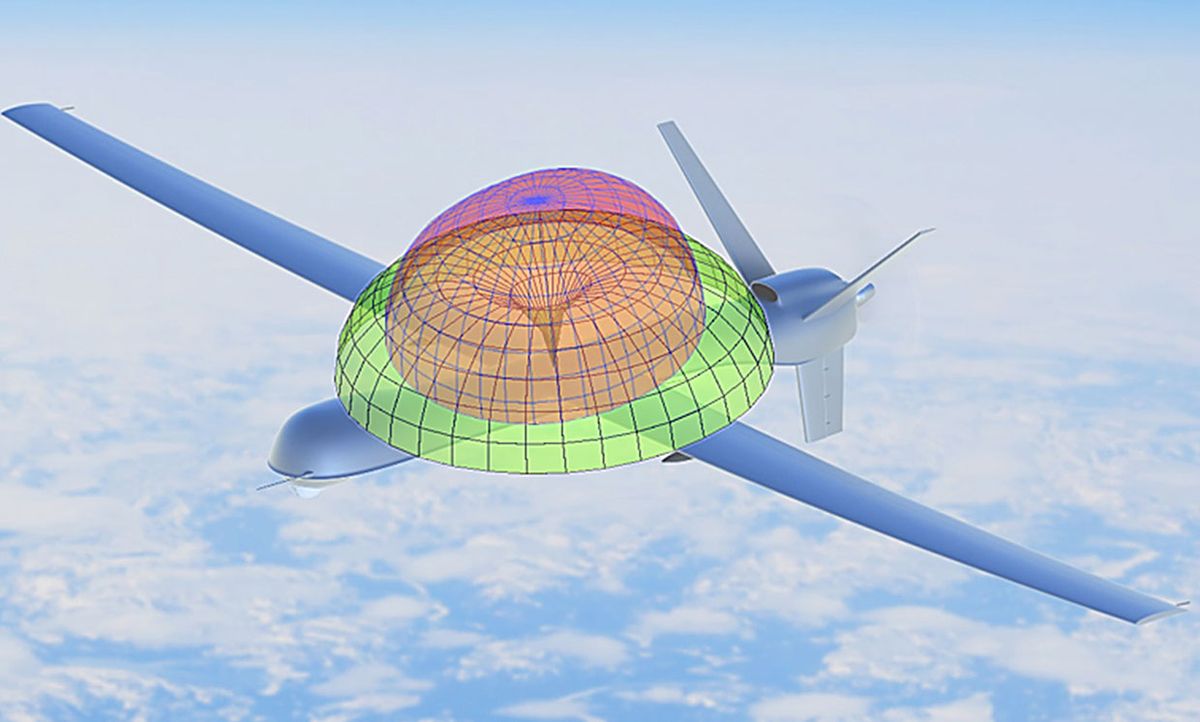A group of Chinese researchers has developed a compact, sabre-like antenna for unmanned aerial vehicles (UAVs) that can switch between two radiation patterns for better communication coverage. They describe their work in a study published 26 February in IEEE Transactions on Antennas and Propagation.
For UAVs cruising at high speeds, it’s desirable to have small, aerodynamic antennas that limit drag but can still yield sufficient bandwidth and coverage. Zhijun Zhang, a researcher at Tsinghua University, notes that sabre-shaped antennas are beneficial in the sense that they are very aerodynamic—but there is a major limitation that comes with this design.
“Conventional sabre-like antennas generate a donut-shape radiation pattern, which provides an omnidirectional coverage and is ideal for air-to-ground communication. However, a donut-shape pattern has a null at its zenith,” Zhang explains.

While this donut-shaped radiation pattern may be sufficient to help the UAV exchange signals with ground communication systems, the “blind spot” of coverage directly above the UAV is problematic when trying to establish communication with satellites (aka “hemisphere coverage”). Therefore Zhang and his team created a novel sabre-like antenna design that can provide a signal directly above the antenna as well.
To accomplish this, the researchers incorporated two metal radiators into the design. The first is a monopole, which is perpendicular to the ground with an omnidirectional pattern. The second is a dipole, which is parallel to the ground with broadside pattern – creating a signal that fills the blind spot of conventional antennas. “The two radiators not only generate two working modes and desired radiation patterns, but also provide a bonus capacitor loading effect, which shrinks the antenna size,” says Zhang. “The antenna can switch between two modes on the fly, and thus provides top hemisphere coverage.”
Simulations and tests suggest that the design can achieve roughly 20 percent bandwidth, which surprised even the researchers behind the design. Zhang says this efficiency happens because both radiators are used in both modes.
“As far as we know, it’s the first effort to realize such a compact aircraft antenna with upper hemispherical coverage and acceptable gain for onboard satellite communication. Next, we intend to design a simpler aircraft antenna with only one mode,” says Zhang, noting that this may involve sacrificing some bandwidth.
Michelle Hampson is a freelance writer based in Halifax. She frequently contributes to Spectrum's Journal Watch coverage, which highlights newsworthy studies published in IEEE journals.



